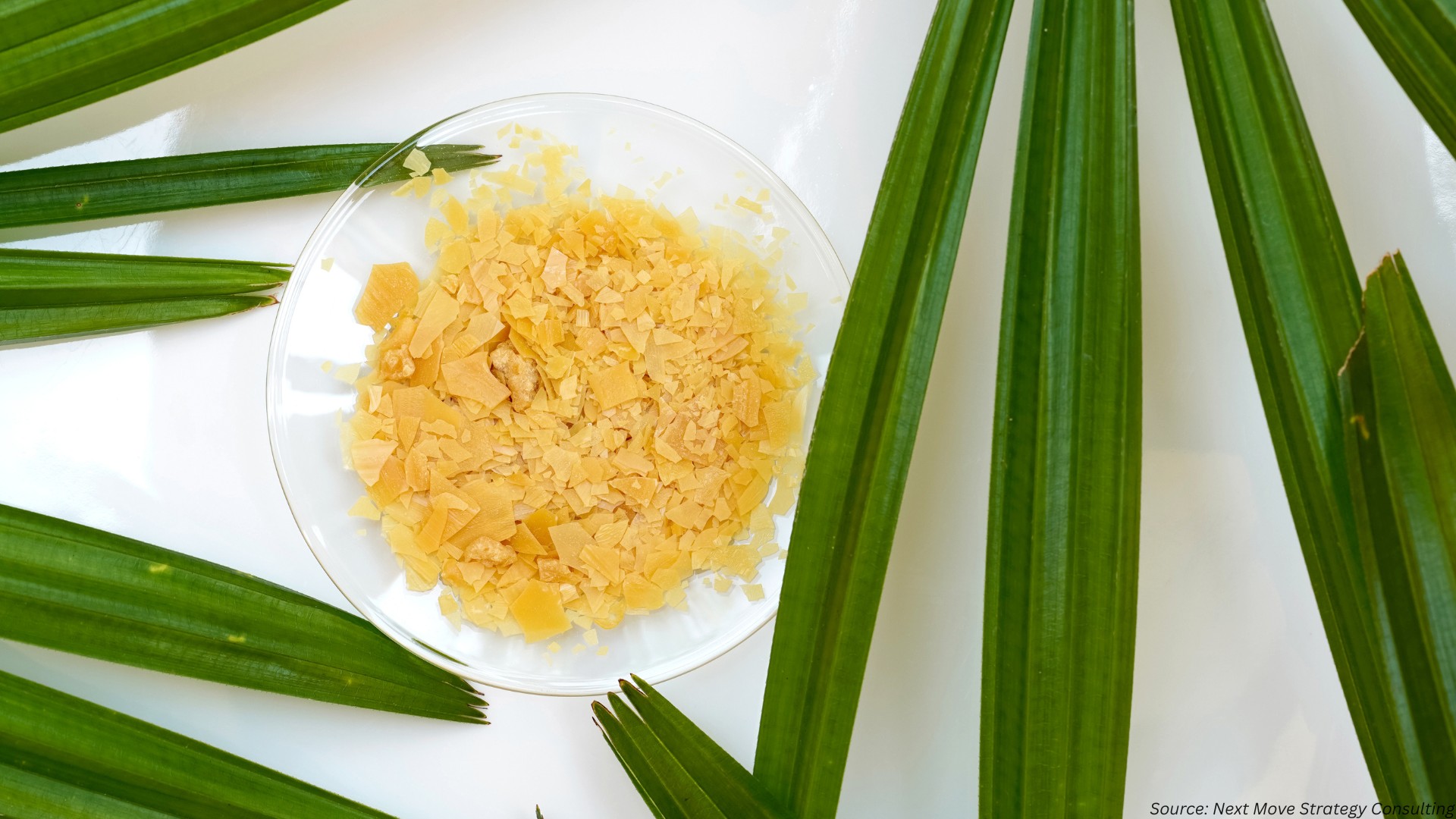
Cellulose Fiber Market by Product (Natural and Man-Made) and by Application (Textile, Apparel, Hygiene, Filtration, Construction, Industrial, and Others) - Global Opportunity Analysis and Industry Forecast 2022-2030
Market Definition
The Cellulose Fiber Market size was valued at USD 29.2 billion in 2021 and is expected to reach USD 55.02 billion by 2030 with a CAGR of 7.3% from 2022-2030.
Cellulose fiber refers to the natural and artificial fibers that are naturally obtained from wood pulp or by using esters of leaves, woods, and barks of plants. In addition, they can also be obtained from other plant-based materials that contain hemicelluloses and lignin. These fibers are used in the manufacturing of adhesives, tape, and fiber-reinforcement composites. Furthermore, due to their remarkable properties such as high strength, absorptive wetness, elasticity, cleanliness and washing ability, and resistance these fibers are highly used in the sealants industry as well.
Market Dynamics and Trends
The demand for cellulose fibre is increasing in industries such as clothing and construction, pharmaceutical, and automotive, among others. Cellulose fibres such as kenaf and flax are used in the automotive industry for manufacturing of tyre and other automotive parts. Similarly, rayon is used in the medical field for the production of bandages & wound dressing and has various other applications in controllable drug delivery system, blood purification, as well as tissue engineering. All these factors drive the growth of the market.
In addition, implementation of favorable government initiatives for a safer environment and surge in the demand for use of plant-based sources in place of petrochemicals has increased the adoption of natural fibers such as cotton and jute. Furthermore, manmade fibers such as viscose, lyocell, and modal has application in manufacturing of industrial and home textiles such as curtains, knitted wear, and dress material. These are the major factors that are expected to propel the growth of the market during the forecast period.
However, rigid rules and regulations regarding forestry and environment as well as fluctuation in the prices of the raw materials are the factors that are expected to restrain the growth of market during the forecast period. On the other hand, increased environmental consciousness and concern for using biodegradable sensors substances for the production of fabrics and significant growth in the textile industry across the globe are estimated to create lucrative growth opportunities for the players of cellulose fibers market in the near future.
Market Segmentations and Scope of the Study:
The cellulose fibers market size has been segmented based on product, application, and geography. On the basis of product, the market is classified into natural and man-made. The natural segment is further classified into plant-based and animal-based. The plant-based segment, furthermore, is grouped into cotton, jute, linen, and wood. The animal-based segment is further grouped into alpaca and silk. The man-made segment is divided into semi-synthetic and synthetic. The semi-synthetic segment is further divided into rayon/viscose and modal. The synthetic segment is again divided into nylon, spandex, and polyester. On the basis of application, the market is divided into textile, apparel, hygiene, filtration, construction, industrial, and others. The geography breakdown and analysis of each of the aforesaid segments include regions comprising of North America, Europe, Asia-Pacific, and ROW.
Geographical Analysis
Asia-Pacific region holds the lion share of cellulose fiber market at present and is expected to continue its dominance during the forecast period as well. This is attributed to factors such as increasing consumer demand, improved standard of living, surge in the demand of cellulose fibers in the fabric and textile industry, medical field, paper and pulp, and in manufacturing of soil conditioners, among others.
In addition, countries such as India, China, Japan, and Indonesia are the major markets that manufacture large number of textiles which further contributes to the growth of the cellulose fiber market in this region.
Moreover, North America is expected to witness a median rise in the cellulose fibers market due to rise in the local as well as big companies which are launching new products and solutions, designing planned marketing strategies, and strengthening long term contracts that are increasing the market growth.
Also, increased research on cellulose and its derivatives by the countries has further lifted the market growth in the forecast period. In addition, USA is one of the largest consumers of cellulose-based products for paper and construction factories in North America which eventually boosts the growth of the market.
Competitive Landscape
The cellulose market comprises of various players such as Daicel Corporation, Eastman Chemical Company, Fulida Group Holdings Co. Ltd., Aditya Birla Group, Kelheim Fibres, Lenzing AG, Sateri Holdings Ltd., Shandong Helon Textiles Sci. & Tech. Co. Ltd, Weyerhaeuser Company (U.S), China Bambro Textile (Group) Co. Ltd., and CFF GmbH & Co. KG. These manufacturers are actively indulging in R&D initiatives, product & technology innovations, and industrial collaborations to enhance their product and increase their growth and geographical reach.
For instance, in April 2021, Birla cellulose won the National Innovative and Sustainable Supply Chain Awards for producing viscose fibre “Liva Reviva” with a pre-consumer cotton fabric waste content of 20%. Moreover, in October 2020, Daicel Corporation introduced "CELLULOSE ACETATE PARTICLES", an environment friendly product derived from natural acetate and plant-derived cellulose that biodegrades into water and carbon dioxide for use in cosmetics.
Key Benefits
-
The cellulose fibers market report provides the quantitative analysis of the current market and estimations through 2022-2030 that assists in identifying the prevailing market opportunities to capitalize on.
-
The study comprises a deep dive analysis of the cellulose fibers market trend including the current and future trends for depicting the prevalent investment pockets in the market.
-
The information related to key drivers, restraints and opportunities and their impact on the cellulose fibers market is provided in the report.
-
The competitive analysis of the market players along with their market share in the cellulose fibers market.
-
The SWOT analysis and Porters Five Forces model is elaborated in the study.
-
Value chain analysis in the market study provides a clear picture of the stakeholders’ roles.
Key Market Segments
By Product
-
Natural
-
Plant-Based
-
Cotton
-
Jute
-
Linen
-
Wood
-
-
Animal-Based
-
Alpaca
-
Silk
-
-
-
Man-Made
-
Semi-Synthetic
-
Rayon/Viscose
-
Modal
-
-
Synthetic
-
Nylon
-
Spandex
-
Polyester
-
-
By Application
-
Textile
-
Apparel
-
Hygiene
-
Filtration
-
Construction
-
Industrial
-
Others
By Geography
-
North America
-
U.S
-
Canada
-
Mexico
-
-
Europe
-
UK
-
Germany
-
France
-
Italy
-
Spain
-
Rest of Europe
-
-
Asia-Pacific
-
China
-
India
-
Japan
-
South Korea
-
Australia
-
Rest of Asia-Pacific
-
-
RoW
-
UAE
-
Saudi Arabia
-
South Africa
-
Brazil
-
Remaining Countries
-
Key Players
-
Daicel Corporation
-
Eastman Chemical Company
-
Fulida Group Holdings Co. Ltd.
-
Aditya Birla Group
-
Kelheim Fibres
-
Lenzing AG
-
Sateri Holdings Ltd.
-
Shandong Helon Textiles Sci. & Tech. Co. Ltd.
-
Weyerhaeuser Company
-
China Bambro Textile (Group) Co. Ltd.
-
CFF GmbH & Co. KG
REPORT SCOPE AND SEGMENTATION:
|
Parameters |
Details |
|
Analysis Period |
2021–2030 |
|
Base Year Considered |
2021 |
|
Forecast Period |
2022–2030 |
|
Market Size Estimation |
Billion (USD) |
|
Market Segmentation |
By Product (Natural and Man-Made), and by Application (Textile, Apparel, Hygiene, Filtration, Construction, Industrial, and Others) |
|
Geographical Segmentation |
North America (U.S., Canada, Mexico) Europe (UK, Germany, France, Italy, Spain, Rest of Europe), Asia-Pacific (China, India, Japan, South Korea, Australia, Rest of Asia-Pacific), Rest of the World (UAE, Saudi Arabia, South Africa, Brazil, Remaining countries) |
|
Companies Profiled |
Daicel Corporation, Eastman Chemical Company, Fulida Group Holdings Co. Ltd., Aditya Birla Group, Kelheim Fibres, Lenzing AG, Sateri Holdings Ltd., Shandong Helon Textiles Sci. & Tech. Co. Ltd, Weyerhaeuser Company (U.S), China Bambro Textile (Group) Co. Ltd., and CFF GmbH & Co. KG. |




















 Speak to Our Analyst
Speak to Our Analyst

























